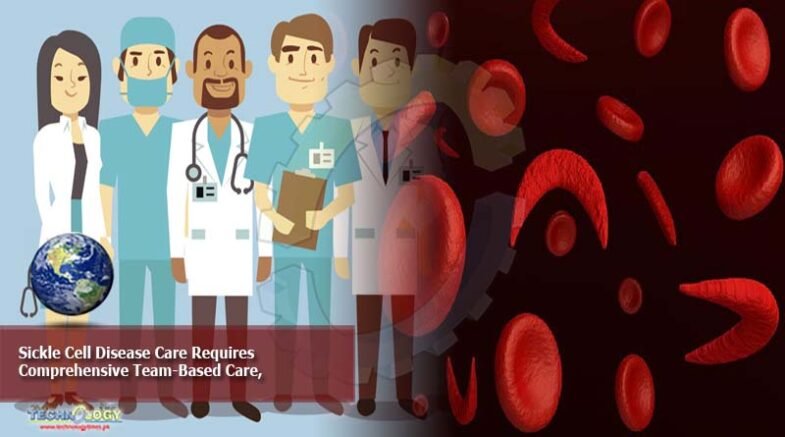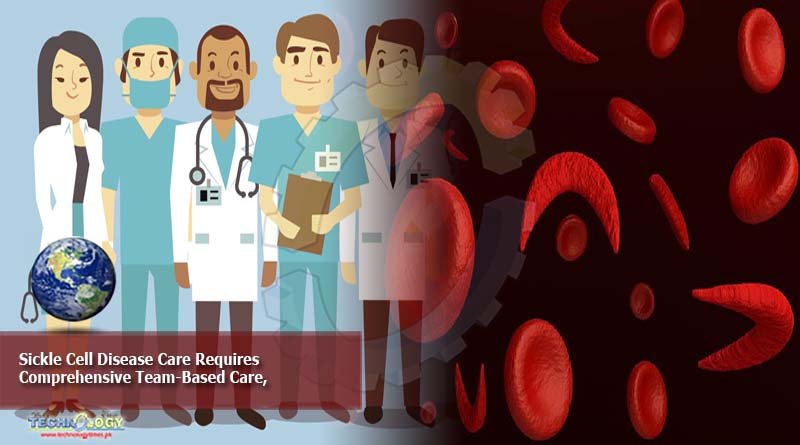A new report of Sickle Cell Disease has been issued from the National Academies of Sciences, Engineering, and Medicine provides a blueprint and eight overarching strategies for improving health care for the approximately 100,000 people in the United States living with sickle cell disease (SCD). It recommends medical and social supports to ensure a safe transition from pediatric to adult SCD care; metrics to assess the quality of SCD care; and new payment models for currently available and pipeline treatments. Addressing Sickle Cell Disease: A Strategic Plan and Blueprint for Action also calls for the National Institutes of Health (NIH) to fund research on non-opiate and palliative pain management approaches.

When a person has SCD, their red blood cells bend into an inflexible sickle shape, causing them to pile up inside blood vessels. That prevents the normal delivery of oxygen throughout the body and can lead to pain, bone deterioration, strokes, and organ failure.
As SCD predominantly affects Black Americans, it exists in the contexts of racism, socio-economic disparities, and unequal levels of research funding and national attention. The report recommends that NIH designate SCD as a health disparity to incentivize research, and that the U.S. Department of Health and Human Services (HHS) fund efforts to identify and mitigate disparities in mortality and health outcomes.
“People with sickle cell disease show incredible resilience. They often have to become their own advocate to get the treatment and services they deserve —whether in the health care system, at school, at work, or in the community,” said Marie McCormick, Sumner and Esther Feldberg Professor of Maternal and Child Health (emerita) at the Harvard School of Public Health, and chair of the committee that wrote the report. “We hope this report spurs policy changes that improve the quality of life for people living with SCD today and for those born with this disease in the future.”
Although more people with SCD are living into adulthood than in the past, there is no formal process or structure for the transition from pediatric to adult SCD care. In children, pain episodes may lead to school disruption, extended absences, and poor academic achievement. School liaisons —who have been untapped resources —can support the educational needs of children with SCD, the report says. Community health workers can also play a vital role in identifying young adults who have been unable to access care because they are no longer on their parents’ insurance.
Bone marrow or stem cell transplant is currently the only curative therapy for SCD, but ideally it should be offered in early childhood, before complications have arisen, the report says. Gene therapy approaches, including CRISPR technology, are still in development, but could offer potential advantages over stem cell transplant because they overcome the problem of a lack of suitable donors. However, there is a need for education around emerging curative approaches. HHS should encourage and reimburse the practice of shared decision-making for patients considering novel therapies, the report recommends. In addition, the NIH and other agencies should work with community-based organizations to educate them about the importance of clinical research and incentivize participation in clinical trials of new treatments.
The Centers for Medicare & Medicaid Services and state Medicaid programs, as the leading insurers for most of the SCD population, should explore novel payment models that encourage and pay for coordinated care delivered by certified SCD centers, and identify approaches to financing the upfront costs of curative therapies. The Social Security Administration should also review disability insurance qualifications to ensure they do not preclude individuals from having a job and Medicaid coverage at the same time, the report recommends.
The pool of SCD care providers in the United States represents a variety of specialties, from hematology/oncology to pediatrics and family medicine. Across all disciplines, there is a need for cultural competency training and training in acute and chronic pain in the context of SCD, says the report. It also notes the lack of diversity among SCD care providers, which may contribute to disparities in health care. Having providers who are similar to their patients in race, ethnicity, and language could promote more effective communication and stronger relationships.
The report recommends that the Health Resources and Services Administration (HRSA) work with states to standardize the use of newborn screening and communication of positive results in genetic counseling.It also recommends that the Centers for Disease Control and Prevention (CDC) work with all states to develop a national longitudinal registry of people living with sickle cell disease, to provide the information and evidence needed to guide care decisions.
Despite ongoing efforts, national quality metrics for SCD care have not been developed, resulting in significant inconsistencies in care. Federal agencies including the Agency for Healthcare Research and Quality, the National Heart, Lung, and Blood Institute, HRSA, and CDC should develop and track a series of SCD care quality indicators, including the patient experience, prevention of disease complications, and health outcomes, the report recommends.
The study — carried out by the Committee on Addressing Sickle Cell Disease: A Strategic Plan and Blueprint for Action — was sponsored by the U.S. Department of Health and Human Services, Office of the Assistant Secretary for Health, Office of Minority Health. The National Academies of Sciences, Engineering, and Medicine are private, nonprofit institutions that provide independent, objective analysis and advice to the nation to solve complex problems and inform public policy decisions related to science, technology, and medicine. They operate under an 1863 congressional charter to the National Academy of Sciences, signed by President Lincoln.
Originally published by National Academies
